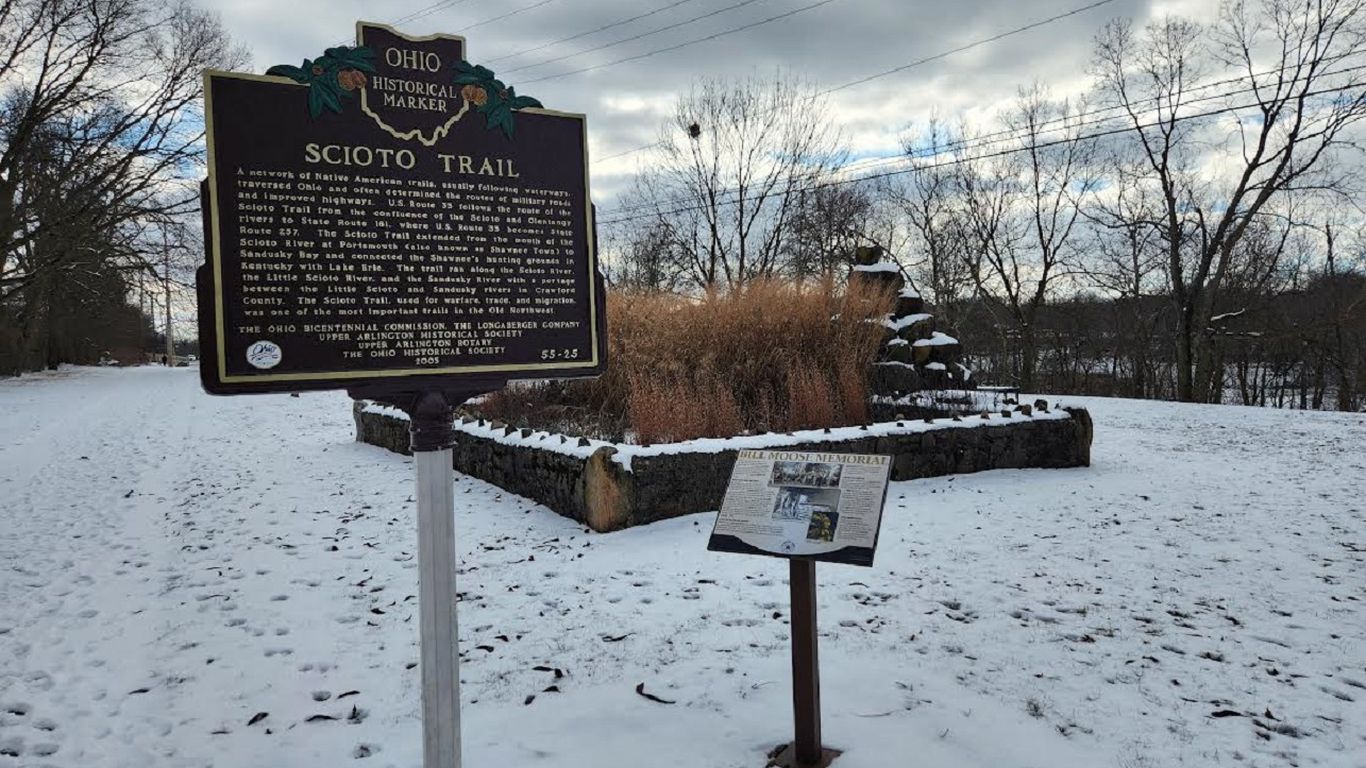The trailblazing history of Ohio's Scioto Trail
It was considered one of the most important trails in the Old Northwest. The Franklin County Historical Marker tour takes a look at the history of Ohio's Scioto Trail, once considered the most important in the Old Northwest. The trail stretches from Lake Erie to the Ohio River and was used for warfare, trade and migration, leading to the construction of Route 33 through Franklin County. Today, a newer route called the Scioto trail travels along the river and through downtown. Near the marker is the burial site of Kihue, who was known as the "last of the Wyandots" in the area.

Published : a month ago by Tyler Buchanan in Tech
Share on email (opens in new window)
Share on email (opens in new window)
Share on nextdoor (opens in new window)
Share on nextdoor (opens in new window)
Share on linkedin (opens in new window)
Share on linkedin (opens in new window)
Share on twitter (opens in new window)
Share on twitter (opens in new window)
Share on facebook (opens in new window)
Share on facebook (opens in new window)
A historical marker for the Scioto Trail in Upper Arlington, seen in snowier times. Photos: Tyler Buchanan/Axios
Our Franklin County Historical Marker tour brings us to Upper Arlington for a trail once considered the most important in the Old Northwest. The marker: Scioto Trail, on the path just south of 2875 Lane Road.
Flashback: Native Americans built trails following waterways like this one that runs alongside the Scioto River.
• The trail once stretched all the way from Lake Erie to the Ohio River.
• It was used for warfare, trade and migration, the marker reads, and much later it guided the building of Route 33 through Franklin County.
Today, a newer route called the Scioto Trail travels along the river and through parts of downtown.
The intrigue: Near the marker is the burial site of Kihue (also known as Bill Moose), whose epitaph calls him the "last of the Wyandots" in the area.
• Kihue died in 1937 at 99 years old and a 9-foot memorial structure was built using boulders from the nearby river.
4️⃣3️⃣ down, 85 to go.
— Thanks to our series sponsor Ohio History Connection. Sponsorship has no influence on editorial content.
